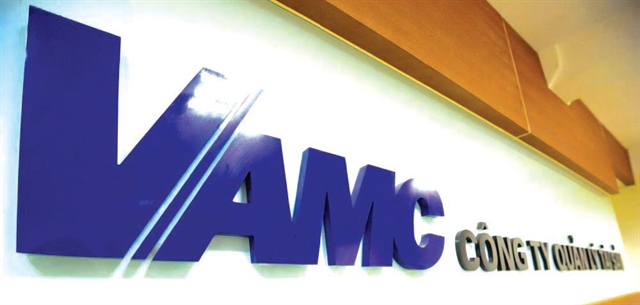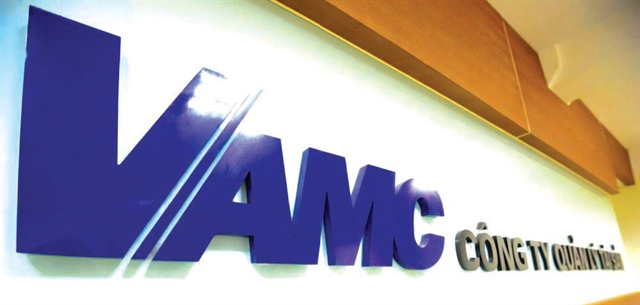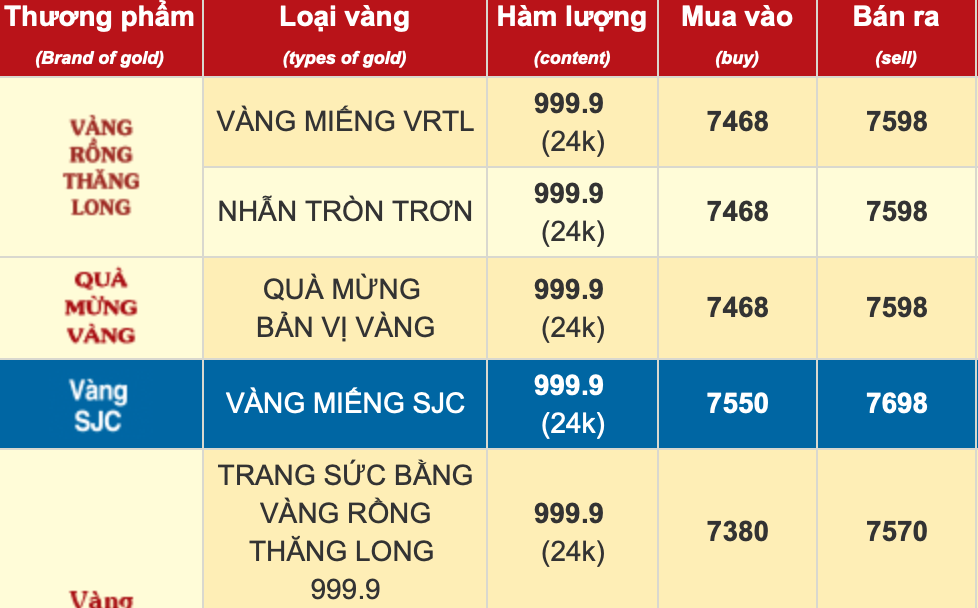This regulation also prevents credit institutions from exploiting the activities of debt management companies to buy and sell debt, thereby altering bad debt data and the situation of credit institutions.
 |
Efforts of the regulator
The total bad debt of the credit institution system, including debt sold to the Vietnam Asset Management Corporation (VAMC) and potential risk debt, has exceeded VND 1 quadrillion and this number continues to increase, although the pace has slowed compared to the 2023-2024 period. As many analyses have pointed out, this “blood clot” of bad debt is one of the bottlenecks hindering the goal of reducing lending rates in the economy.
In May 2025, the National Assembly discussed the proposal to legalize some important contents of Resolution 42/2017/QH14 on piloting the handling of bad debts of credit institutions into the Law on Credit Institutions being amended. This is expected to create a stable and long-term legal basis, helping to handle bad debts more effectively, while protecting the rights of credit institutions, depositors, and borrowers. More efficient handling of bad debts will also reduce the pressure on credit institutions to make risk provisions, thereby creating conditions for lowering lending rates.
Previous statistics showed the effectiveness of the solutions in Resolution 42. Specifically, from August 15, 2017, to December 31, 2023, an average of VND 5,800 billion of bad debts was handled per month, 2.5 times higher than the average of VND 2,280 billion before Resolution 42. Of the total VND 443,800 billion in bad debts under this resolution, the proportion of customers repaying debts and handling debts through the sale and auction of collateral increased significantly, accounting for 36.35% and 20.85% respectively, equivalent to VND 161,300 billion and VND 92,500 billion.
The expiration of Resolution 42 on December 31, 2023, has significantly affected the handling and recovery of debts by banks and debt trading and handling organizations. Essentially, the draft amended Law on Credit Institutions will legalize three important contents of Resolution 42, including: the right to seize collateral; the attachment of collateral of the party subject to execution; and the return of collateral that is an exhibit in a criminal case. These regulations are in line with the spirit of Resolution 68 of the Politburo on developing the private economy, ensuring property rights and contract enforcement.
Also in May 2025, the State Bank of Vietnam (SBV) sought comments on the draft Decree amending and supplementing a number of articles of the Decree 53/2013/ND-CP dated May 18, 2013 of the Government on the establishment, organization, and operation of VAMC. The changes and supplements aim to unify and synchronize with the Law on Credit Institutions 2024, related legal documents, and practical requirements.
One of the clearest impacts is the expansion of VAMC’s scope of debt purchasing activities, as the company is allowed to buy debt at market prices in accordance with the provisions of the Law on Credit Institutions 2024. In addition, this draft decree also abolishes the SBV’s approval of the plan to buy debt at market prices and the plan to buy debt with special bonds, reducing administrative procedures for VAMC while ensuring the role of management and ownership representation of the State capital at VAMC by the SBV.
Need for synchronized solutions
Meanwhile, the SBV also sought comments on the draft Circular regulating the activities of subsidiaries and affiliated companies of credit institutions in the field of debt management and asset exploitation (AMC), with changes suitable to the current reality. One of the most important additions is Article 5, which stipulates the debts to be handled in the activities of AMCs. The activities of credit institutions are now more diverse than at the time of the issuance of Decision 1390/2002/QD-NHNN on the organization and operation of AMCs. Therefore, the receipt and handling of debts by AMCs on behalf of credit institutions need to be expanded to ensure resources for handling bad debts arising from the activities of credit institutions.
Specifically, the debts that AMC manages and exploits on behalf of credit institutions include non-performing debts, both on and off-balance sheet, and the determination of on-balance sheet debts in accordance with Circular 31/2024/TT-NHNN. For debts that the AMC is allowed to buy and sell, it only includes non-performing debts arising from lending activities, payments made under guarantee contracts, and receivables from financial leasing contracts. The determination of non-performing debts is according to Circular 31/2024/TT-NHNN.
According to the regulator, the regulation of the scope of debts to be received, managed, and handled on behalf of credit institutions; and the buying and selling of non-performing debts will help debt management companies focus on handling non-performing debts. This regulation also prevents credit institutions from exploiting debt management companies to buy and sell debts, thereby altering bad debt data and the situation of credit institutions.
However, with the secondary debt market still underdeveloped, and VAMC and the Vietnam Debt and Asset Trading Corporation (DATC) remaining the sole buyers, while the resources of these companies are limited, the handling of bad debts by credit institutions and AMCs still faces many difficulties. In the case of VAMC, although it is allowed to buy debt at market prices, this can only be done after a complex and cumbersome valuation process.
Some restrictions on foreign investors’ ownership of real estate also make it difficult to attract international capital to participate in the debt market and handle collateralized real estate at banks. For their part, banks have focused solely on real estate collateral when lending, and in some cases, the value of these assets has been overvalued due to a hot real estate market, even though bank policies usually only allow lending up to 70-80% of the appraised value of the mortgaged real estate.
As a result, when the real estate market cooled down, as evidenced in the period 2022-2024, many real estate assets that were put up for sale remained unsold, and credit institutions had to deeply discount them and accept actual recoveries lower than book value, using provisions to handle risks. In some cases, banks have had to accept debt restructuring for customers to keep them afloat, waiting for the market to recover.
In addition, to promote growth and expand their scale quickly, many banks’ development models prioritize KPI lending growth over KPI debt collection, creating a “growth-at-all-costs” mentality that leads to the continuous generation of new debts and potential risks, while old bad debts remain unresolved. The organizations also lack internationally “standard” debt handling experts, and the debt collection team is mostly part-time and inexperienced in corporate restructuring for debt handling.
Finally, in the process of handling a bad debt where the customer does not cooperate, legal action also does not bring about the desired effectiveness, as litigation and enforcement procedures are prolonged. A first-instance judgment of the court usually takes 1-2 years, and waiting for the enforcement stage takes even longer due to appeals by the defendant. All of these factors result in high recovery costs, and the collateral loses value during the waiting period, leading to losses for the bank.
Trieu Minh
Governor Nguyen Thi Hong: Zero-Interest Special Loans Only Applicable to Two Scenarios
“The State Bank’s special lending activities are essential and serve as a safeguard against mass withdrawals from credit institutions, as well as containing the risk of contagion to other credit institutions,” Governor Nguyen Thi Hong emphasized.
Anticipating a Significant Drop in Bank’s Non-Performing Loans Post-Legislative Resolution 42
The government has presented to the National Assembly the Draft Law amending and supplementing a number of articles of the Law on Credit Institutions, aiming to legalize some important policies from Resolution No. 42. Legalizing Resolution 42 will not only enable banks to handle secured assets of non-performing loans but also unblock previously clogged capital flows, thereby facilitating reduced lending rates to the benefit of both banks and borrowers.
Why Does the State Bank Prohibit Illegal USD Trading?
The foreign exchange dealers are urged to uphold the anti-dollarization policy and refrain from engaging in illicit foreign currency transactions. It is imperative that these dealers operate within the legal framework and refrain from any activities that could undermine the stability and integrity of the national currency.





















